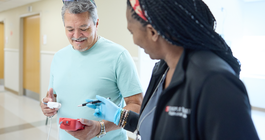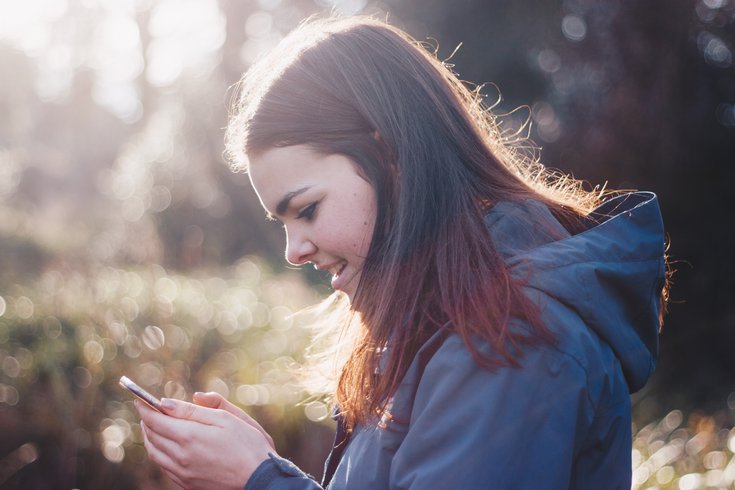
May 10, 2023
 Luke Porter/Unsplash
Luke Porter/Unsplash
New social media guidelines from the American Psychological Association call for adolescents to receive literacy training before beginning to use platforms like YouTube, Snapchat and TikTok.
Social media use is a fact of life for most teenagers, but there are ways to promote the healthy use of platforms like TikTok, YouTube and Instagram, the American Psychological Association says.
Before using these platforms, teens should be trained in social media literacy to ensure they have the skills needed to maximize the likelihood of "balanced, safe and meaningful experiences," the APA said Tuesday as it released a set of recommendations for adolescent social media use.
The guidelines are intended to help parents, teachers, policymakers and social media companies ensure adolescents use social media in healthy ways and are protected from cyberbullying, discrimination and content that encourages risky behaviors.
"Social media is neither inherently harmful nor beneficial to our youth," APA President Thema Bryant said. "But because young people mature at different rates, some are more vulnerable than others to the content and features on many social media platforms that science has demonstrated can influence healthy development. Just as we require young people to be trained in order to get a driver's license, our youth need instruction in the safe and healthy use of social media."
The ways teens are affected by social media depends on many factors including "what they can do and see online, their preexisting strengths or vulnerabilities, and the contexts in which they grow up," the guidelines state. Teens shape their social media experiences by deciding whom to like and follow, and choosing which social media features to use.
Based on current research, the APA offered these 10 guidelines to help protect teens as they use social media:
1. Youth should be encouraged to use the social media features that allow them to make social connections in healthy ways. Studies have shown that online social interaction can be beneficial for one's mental health, especially when people are feeling isolated. This is particularly true for youth struggling with social anxiety, depression or loneliness. But the APA noted that teens with mental health issues may be at higher risk of cyberbullying.
2. Social media use and individual platforms should be tailored to users' developmental capabilities. A one-size-fits-all design for adults and children isn't appropriate. Special features that could be problematic for adolescents include recommended content, unrestricted time limits and endless scrolling.
3. Adults should monitor the social media use of children ages 10 to 14. Teenagers can gain more autonomy as they get older and gain more digital literacy skills.
"Brain regions associated with a desire for attention, feedback, and reinforcement from peers become increasingly sensitive beginning in early adolescence, and regions associated with mature self-control are not fully developed until adulthood," the advisory states. "Parental monitoring (i.e., coaching and discussion) and developmentally appropriate limit-setting thus is critical, especially in early adolescence."
4. Social media content that encourages risky behaviors such as self-harm or restrictive eating should be minimized as much as possible. Social media platforms should not drive users to this content, and users should be able to report harmful content.
5. Exposure to discrimination, prejudice, hate or cyberbullying should be limited to protect adolescents' mental health. Research has shown that even minimal exposure can increase symptoms of depression and anxiety. To combat these effects, the APA said adolescents should be trained to recognize and critique racist messages.
6. Adults should routinely screen adolescents for signs of "problematic social media use," including mindlessly scrolling on social media when they should be doing schoolwork, hanging out with friends or participating in sports and other activities.
7. Social media use should not interfere with adolescents' sleep or exercise routines. Adolescents need at least 8 hours of sleep each night. Parents can encourage good sleeping habits by forbidding phones and laptops from the bedroom in the hour before bedtime.
8. Parents and educators need to have discussions with adolescents on the dangers of using social media for social comparison, particularly regarding physical appearance. Research has shown that these comparisons can lead to poorer body image, disordered eating and depression, especially among girls.
9. Adolescents should receive training in social media literacy to ensure that they have the knowledge and skills to navigate social media platforms safely. They need to critically evaluate the messages and images they encounter so they can identify misinformation.
10. Because current information on the way social media affects development and wellbeing is limited, there needs to be greater investments into this type of research.
Surveys have shown that many parents are not aware of how much time their teens are spending online. A report from Common Sense Media shows that teens get about 9 hours of screen time each day. This includes watching television, listening to music, interacting on social media or playing video games. By contrast, parents believe their children get about 3 hours of screen time.
The most common social media platforms used by teenagers are YouTube, TikTok, Instagram and Snapchat, according to a Pew Research Center report released last fall. Facebook, Twitter and Reddit were less likely to be used.
Emma Woodward, a clinical psychologist with the nonprofit Child Mind Institute, told NBC News that the APA recommendations can be used to start conversations with teens about their social media use. Woodward wasn't involved in the development of the new guidance.
"I certainly think the best way to help kids be safe online is for it to be a collaboration between parents and their kids or their teens," Woodward said. "That collaboration is probably going to lead to the most success in terms of helping kids use social media safely."